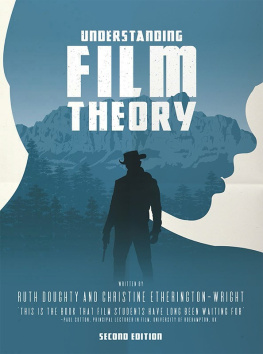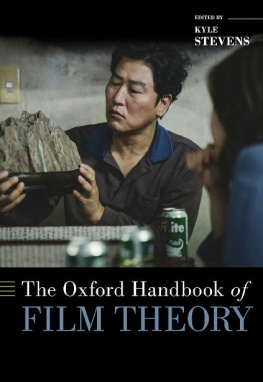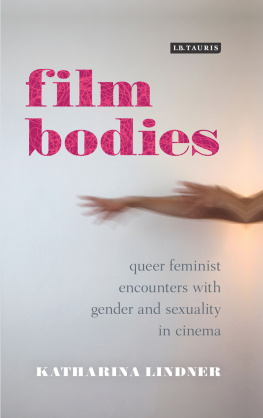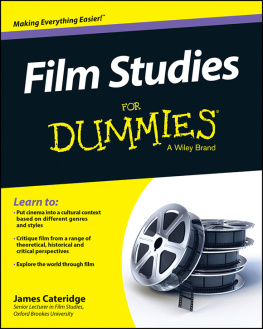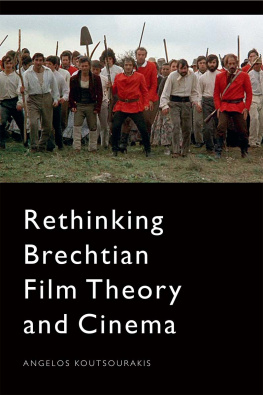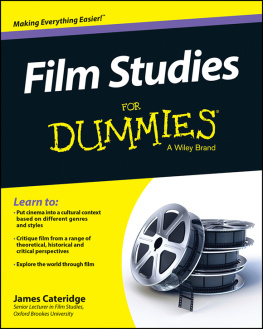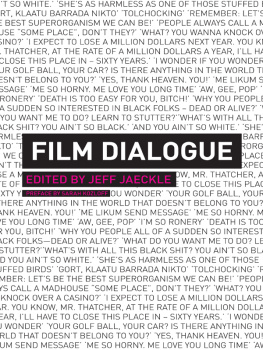Lucy Fischer and Patrice Petro
Introduction:
Memories of Underdevelopment
This is the second volume on the subject of film pedagogy that the Modern Language Association (MLA) has published in its series Options for Teaching. The first was Barry Keith Grants Film Study in the Undergraduate Curriculum , which, interestingly and tellingly, was released in 1983 under the banner Options for the Teaching of English. Hence for many years, at least according to the MLA, film studies was a subset of English and subsumed under the category of language and literature. Clearly, the field has advanced considerably since then, both in its scholarly and academic standing. The Society for Cinema and Media Studies (SCMS), the fields preeminent scholarly association, was established in 1959 and has held annual conferences since 1960. Today it boasts nearly three thousand members from institutions of higher education around the world, all of whom would agree that cinema and media studies constitutes a distinct although highly complex and porous discipline.
While as of this writing the MLA lists some thirty titles in its series Options for Teaching, several, including Grants volume, are out of print. The majority focus on literature or language, concentrating on such highly specific areas as childrens literature, representations of the Holocaust or Spanish Civil War, the African novel, the graphic novel, and Stuart and Tudor women writers. Teaching Film , by contrast, has the formidable task of confronting the entirety of the film pedagogical landscape, an impossible and unattainable undertaking. We can only gesture toward broad areas, issues, and questions that we trust will receive more detailed consideration in the future.
Despite the absence of a single comprehensive volume on teaching film, the film studies field, internationally, has produced a substantial body of work on the subject. The British Film Institute, for example, which has a strong commitment to outreach and education, has a publication series that does for cinema and television what the MLA series does for literature, with volumes on such focused topics as teaching short films (Quy), teaching black cinema (Jones), and teaching film and television documentary (Benyahia). Furthermore, a few US film journals (such as Cinema Journal , sponsored by SCMS) have historically devoted occasional sections of an issue to teaching, in which media instructors offer their syllabi and thoughts on curriculum design. As for books, in the United States there have been almost none dedicated exclusively to film pedagogy. Instead there have been a plethora of works that can be used in the classroom (e.g., anthologies, basic histories, formal analyses, and film history texts), but these are addressed more to the student than to the teacher (although a few come with teachers guides). Thus the writing on approaches to teaching film has been piecemeal and dispersed and, therefore, difficult for teachers to know of or track down. Unlike the United Kingdom, the United States has no national institution dedicated to the teaching and preservation of cinema to which college professors can turn for source materials and advice. Moreover, film studies has not had the established and long-standing position of other humanities fields in the US academya fact that has made its teaching more challenging than other subjects.
We have called our introduction (with no small sense of irony) Memories of Underdevelopmentan allusion to Memorias del subdesarrollo , the famous Cuban film of 1968 by Toms Gutirrez Alea that tracks the tension between the private life of a male intellectual and the revolution that surrounds him. On the one hand, our summoning of this title (which, like the reenergized emergence of academic film studies, dates to the late 1960s), seeks to underscore the ways that our field still suffers from a certain lack of recognition and its attendant deprivations. On the other hand, the revolution is here, and film studies has been in the advanced guardat times leading the way in the humanities. It is this dual sense of past and present, disadvantage and advantage, development and perceptions of underdevelopment that we seek to invoke in this volume and explore in this introduction.
Primary among the fields memories of underdevelopment is the question of its recognition in academia. As Krin Gabbard explains in a 2006 article for the Chronicle of Higher Education , when the National Research Council (NRC) released its 1995 report on the disciplines, film studies was unranked but not entirely ignored. At that time, it was declared to be an emerging discipline, along with race, ethnicity, and postcolonial studies and feminist, gender, and sexuality studies. Ten years later, in 2005, the NRC began seeking new information to move film studies into its next set of rankings. Gabbard reports that Charlotte V. Kuh, the director of the NRCs task force that constructs its taxonomies and ranks disciplines, again declares film studies to be an emerging discipline, now one also of ambiguous provenance. As Gabbard wryly remarks:
Although the term might suggest something more exotic, it merely acknowledges that the advanced study of cinema takes place in departments of comparative literature, French, theater, and communications as well as in programs prominently labeled cinema and media studies.
Indeed, our field is known by many namesnot only those noted by Gabbard but also film studies, screen studies, and visual culture, to name a few. Likewise, the field is dispersed across a range of academic departments, programs, institutional divisions, and scholarly organizations (SCMS, but also the MLA, the University Film and Video Association, the Latin American Studies Association, the German Studies Association, the Popular Culture Association, the International Communications Association, and the College Art Association, among others). While this academic polymorphism and mobility serves film studies well in an age that questions the boundaries of disciplinarity, such indeterminacy often leads to institutional invisibility and, as a result, film studies has often fallen between the crackswith all the perils that metaphor involves.
The Division on Film (which includes history, criticism, and theory) is among the largest of the MLA Division Executive Committees. Much of this membership comes not only from film studies departments but also from English, comparative literature, and foreign language and literature departments. While there is something appealing in the designation of an emerging discipline, since it evokes an ideal of a discipline that is in a constant state of flux and becoming, there are obvious drawbacks and pitfalls to such a liminal and undefined status as well. Indeed, the fundamental interdisciplinarity of our field, coupled with its institutional diffusion, has made it nearly an absent signifier to some of our peers and nearly unclassifiable within the NRCs system of taxonomies and disciplinary rankings; thus, at least for the NRC, cinema and media studies remains, more than half a century after the establishment of a scholarly association in its name, officially in a merely provisional (or embryonic) state.
In this regard, it is important to note that courses in film studies have been offered at US universities since at least 1915. In his Scenes of Instruction: The Beginnings of the U.S. Study of Film , Dana Polan explores the history of film studies as an academic field, situating his research within scholarship in other disciplines in the humanities, sciences, and social sciences that have also questioned and investigated disciplinarity since the 1990s. He points out that while film theory has been scrutinized by scholars in our field, the tracing of our institutional history has remained largely ahistorical and impersonal. His study therefore focuses precisely on the human practice of film studies, paying particular attention to pedagogy and the development of approaches to university instruction. In the process, he provides a more complicated understanding than the traditional narrative of how film studies came into being in US higher education, which commonly has the field forming in the 1950s, culminating in 1959 with the founding of the Society of Cinematologists (formerly SCS, the forerunner of the SCMS), and then proliferating in the spirit of 1960s counterculture. Polan turns his attention to the period ignored by this conventional narrative, concentrating on the years between 1915 and 1935. He begins in 1915, when the earliest film classes coincided with the release of the first feature films and with a proliferation of writing about film. He ends with 1935, the year Iris Barry founded New Yorks Museum of Modern Arts (MoMA) circulating film library, which overnight constituted a veritable canon for students of film and was available to be viewed in classes.




